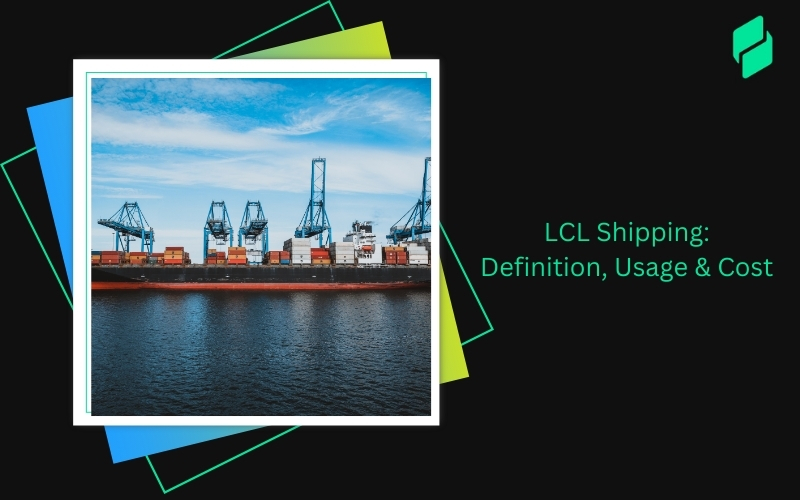Optimize your business: use unlimited savings with Pazago fulfilled now!
Get Started ->Did you know that over half of India's workforce depends on agriculture, yet the sector's contribution to GDP remains modest at around 14%? This surprising gap highlights the challenges that persist within the supply chain of agricultural products. These hurdles often translate into inefficiencies, delays, and higher costs for exporters and importers. But with the right strategies and tools, you can tackle these challenges and make the most of the opportunities in the agricultural sector.
The segment has experienced a strong rebound recently, with export numbers showing impressive growth. In this blog, we’ll explore why it’s essential for those involved in imports or exports to stay updated on the trends fueling this positive momentum. We’ll also examine the key drivers and trends shaping the growth of the Indian textile export industry.
Understanding the Agricultural Supply Chain

The supply chain of agricultural products is a detailed system that links farms to consumers. It involves multiple stages, including growing and harvesting crops, processing them, storing them, distributing them, and selling the final products.
Key Components of the Agricultural Supply Chain
The supply chain of agricultural products ensures a seamless flow of goods from farms to consumers while maintaining quality and efficiency at every step. Each stage plays a critical role in transforming raw produce into market-ready products.
- Production (Farmers and Primary Producers): This is where it all begins. Farmers grow crops or rear livestock, relying on weather, soil quality, and agricultural inputs like seeds, fertilizers, and equipment. The yield at this stage directly impacts the downstream processes.
- Processing and Packaging: After harvest, raw produce is processed to meet quality standards and consumer preferences. This involves cleaning, sorting, grading, and packaging to keep the products fresh and ensure they last longer.
- Storage and Transportation: Proper storage is crucial to prevent post-harvest losses. Cold chains and warehouses help maintain product quality, especially for perishable goods. Transportation connects farms, processing units, and markets, often requiring specialized vehicles for temperature-sensitive goods.
- Distribution and Retail: Products are moved from storage facilities to wholesalers, retailers, or export hubs. For exporters, this step involves coordinating with international buyers and complying with foreign market regulations.
- End Consumers: The final destination of the supply chain. Whether through supermarkets, local markets, or export channels, consumer satisfaction depends on agricultural products' quality, price, and availability.
Agriculture Market Dynamics and Consumer Trends
Agriculture is deeply influenced by evolving market dynamics and shifting consumer preferences. For Indian exporters, staying informed about these trends can open doors to new opportunities.
- Demand for Sustainable and Organic Products: Global consumers are increasingly seeking sustainably produced and organic agricultural products. Indian exporters can capitalize on this trend by focusing on certifications and eco-friendly practices.
- Changing Consumption Patterns: Health-conscious consumers are driving demand for fresh fruits, vegetables, and minimally processed foods. Processed snacks and ready-to-eat products are also gaining traction.
- Digitalization of Markets: E-commerce platforms and online marketplaces have reshaped the way agricultural products are bought and sold. Exporters who adopt digital platforms can reach wider audiences and enhance their market presence.
Agricultural Exports: Performance and Key Markets
India's agricultural exports stood at $48.15 billion in 2023-24, showing an 8% drop compared to the previous year. Despite this dip, the sector remains critical to the economy. Major products include rice, spices, sugar, and seafood, which are staples in both regional and global markets.
The largest importers of India's agricultural products for 2024-25 were:
- USA
- China
- UAE
- Saudi Arabia
These nations not only provide vast opportunities but also demand stringent adherence to quality and safety standards. Understanding the preferences and regulatory frameworks of these markets is critical for exporters.
With a clear understanding of the supply chain, it’s crucial to address the pressing issues that affect its success.
Also Read: Guide To Importing And Exporting From USA For Indian Small Businesses
Key Challenges in Agricultural Supply Chain Management

Each stage, from production to distribution, has unique hurdles that can disrupt efficiency and profitability. Below, we break down the most pressing issues:
- Infrastructure Deficits
Infrastructure gaps are one of the biggest barriers to a seamless agricultural supply chain.
- Storage Limitations: India faces a chronic shortage of cold storage facilities. This impacts perishable goods and leads to spoilage and rejection in export markets. Farmers and exporters incur additional transportation and waste management costs without sufficient warehouses near production hubs.
- Transportation Issues: Poor rural road connectivity delays the movement of goods from farms to markets or processing centers. Outdated transportation fleets also increase delivery times, reducing product freshness.
- Fragmented Supply Chains
The Indian agricultural supply chain involves numerous intermediaries, each adding complexity and cost.
- Multiple Intermediaries: Farmers often sell produce to local agents or markets, who then pass it through wholesalers before reaching exporters. This multi-layered system inflates prices and reduces profit margins for farmers and exporters alike.
- Lack of Transparency: Exporters struggle to trace the origin of goods or ensure quality consistency. Consumers, particularly in international markets, demand traceability, making it a crucial gap in the supply chain.
- Quality Control Issues
Maintaining consistent quality is critical for success in export markets. However, several factors contribute to challenges in this area.
- Inconsistent Farming Practices: Variability in farming techniques, pesticide usage, and post-harvest handling leads to inconsistent product quality.
- Stringent Import Standards: Major importing countries like the USA and EU enforce strict regulations on pesticide residue levels and packaging standards. Non-compliance can lead to rejected shipments and financial losses.
- Regulatory Complexities
The regulatory environment governing agriculture and trade in India is highly intricate.
- State-Level Variability: Each Indian state has its own policies regarding agricultural produce, leading to inefficiencies in moving goods across state lines. For example, taxes, transportation permits, and mandi fees differ significantly across regions.
- International Compliance: If you're an exporter, you need to comply with various international regulations such as Good Agricultural Practices (GAP) and Hazard Analysis and Critical Control Points (HACCP). Meeting these standards takes time, specialized knowledge, and a fair bit of extra investment.
- Limited Technological Integration
Despite the potential of digital solutions, many agricultural supply chains in India remain reliant on traditional practices.
- Manual Processes: Inventory management, logistics planning, and documentation are often done manually, increasing the risk of errors.
- Low Awareness Among Farmers: Smallholder farmers, who dominate Indian agriculture, are often unaware of the benefits of technology in improving efficiency and profitability.
- Climate and Environmental Risks
The unpredictable nature of agriculture, driven by environmental factors, poses ongoing risks to the supply chain.
- Weather-Dependent Yields: Erratic rainfall, droughts, and floods can disrupt farming schedules and reduce output.
- Sustainability Pressures: Global buyers are increasingly demanding eco-friendly practices, and exporters are under pressure to adopt sustainable methods in farming, processing, and logistics.
Overcoming these challenges starts with adopting smart strategies that can drive lasting change.
Also Read: Key Challenges and Solutions in Supply Chain Management
Opportunities and Strategies for Agricultural Supply Chain

India's agricultural supply chain presents opportunities to overcome existing challenges and achieve greater efficiency and profitability. By implementing these strategies, exporters and importers can address critical pain points and build long-term success.
- Invest in Infrastructure Development
Improving infrastructure is key to reducing losses and ensuring smoother operations.
- Cold Storage Solutions: Establishing or utilizing modern cold storage facilities near production zones can reduce spoilage, especially for perishables like fruits, vegetables, and dairy.
- Efficient Transportation: Investing in better road networks and adopting specialized vehicles for agricultural goods can cut transit times and preserve quality. Streamlined logistics also reduce costs, ensuring competitive pricing in export markets.
- Strengthen Farmer Relationships
Building direct partnerships with farmers helps ensure quality and reduces inefficiencies.
- Fair Pricing Models: Provide farmers with transparent pricing to encourage the supply of high-quality produce while minimizing reliance on middlemen.
- Skill-Building Initiatives: Educate farmers on post-harvest best practices, international standards, and sustainable farming methods to enhance product marketability.
- Align with Global Market Demands
Understanding consumer trends and meeting international requirements can help exporters access new markets.
- Sustainable and Organic Products: Focus on obtaining certifications for organic farming and sustainability to meet the growing demand for environmentally conscious goods.
- Market-Specific Customization: Tailor products to meet the preferences and regulations of top importing nations like the USA, UAE, and China.
- Take Advantage of Government Schemes
Government policies offer support for exporters and importers to optimize operations.
- Export Incentives: Programs like the RoDTEP and MEIS schemes provide rebates and financial benefits for exporters.
- Infrastructure Development: Utilize government initiatives aimed at improving agricultural logistics, cold chain networks, and port connectivity.
- Build Resilience Through Risk Management
Proactive risk management ensures reliability across the supply chain.
- Diversify Suppliers: Avoid over-dependence on single sources by establishing multiple reliable suppliers.
- Insurance Coverage: Protect shipments against potential risks such as weather-related disruptions or logistical delays through comprehensive insurance plans.
- Adopt Sustainable Practices
Global buyers increasingly demand environmentally friendly products, making sustainability a strategic priority.
- Eco-Friendly Packaging: Replace conventional packaging with biodegradable or recyclable materials to appeal to eco-conscious consumers.
- Resource Conservation: Train farmers in water-saving techniques and soil preservation methods to promote long-term agricultural sustainability.
- Use Technology for Operational Excellence
Advanced technology can simplify agricultural supply chain operations, from production to distribution.
- Real-Time Visibility: Use technology to track shipments across multiple regions and carriers, ensuring timely delivery and better customer communication.
- Centralized Data Management: Digital platforms allow the storage and organization of key trade documents, inventory records, and payment histories for quick access and smoother workflows.
- Predictive Analytics: Leverage tools that forecast demand and provide actionable insights to help exporters and importers plan their logistics more effectively.
Transform the way you manage your operations. Start with Pazago now.
To complement these strategies, let’s look at how Pazago simplifies agricultural supply chain management.
Also Read: Transforming Business Strategy with Advanced Supply Chain Solutions
Simplify Agricultural Supply Chains with Pazago

Pazago simplifies agricultural supply chain management with a powerful suite of tools designed for exporters and importers. Focusing on real-time visibility, streamlined processes, and cost efficiency eliminates common trade bottlenecks.
Key Features of Pazago
- Digital Trade Management: Speed up and simplify purchase orders by cutting out paperwork and keeping everything organized in one place.
- Cost-Effective Logistics: Save on shipping with trusted carrier networks.
- Centralized Communication: Align trade partners through a unified communication hub.
- Document Handling: Manage and store essential trade documents for quick and easy access.
- Cargo Tracking: Monitor shipments from 180+ carriers to guarantee on-time deliveries.
- International Payments: Simplify Forex and cross-border transactions for hassle-free payments.
- Insurance: Protect shipments with paperless insurance.
Pazago simplifies complex trade operations, offering transparency, reliability, and efficiency. With everything you need in one platform, it's a complete solution for agricultural exporters and importers.
Conclusion
India's supply chain of agricultural products, while full of potential, comes with its own set of challenges. Exporters and importers face significant hurdles, from infrastructure deficits and quality control issues to regulatory complexities. However, opportunities abound for those willing to invest in better infrastructure, adopt sustainable practices, and adopt digital tools.
By focusing on strategies like building stronger relationships with farmers, meeting global market demands, and making the most of government support, you can optimize the supply chain of agricultural products and boost profitability. On top of that, Pazago offers the technology you need to simplify your processes, improve transparency, and make global trade smoother than ever.
Sign up with Pazago today and experience smarter agricultural trade management!


.png)








